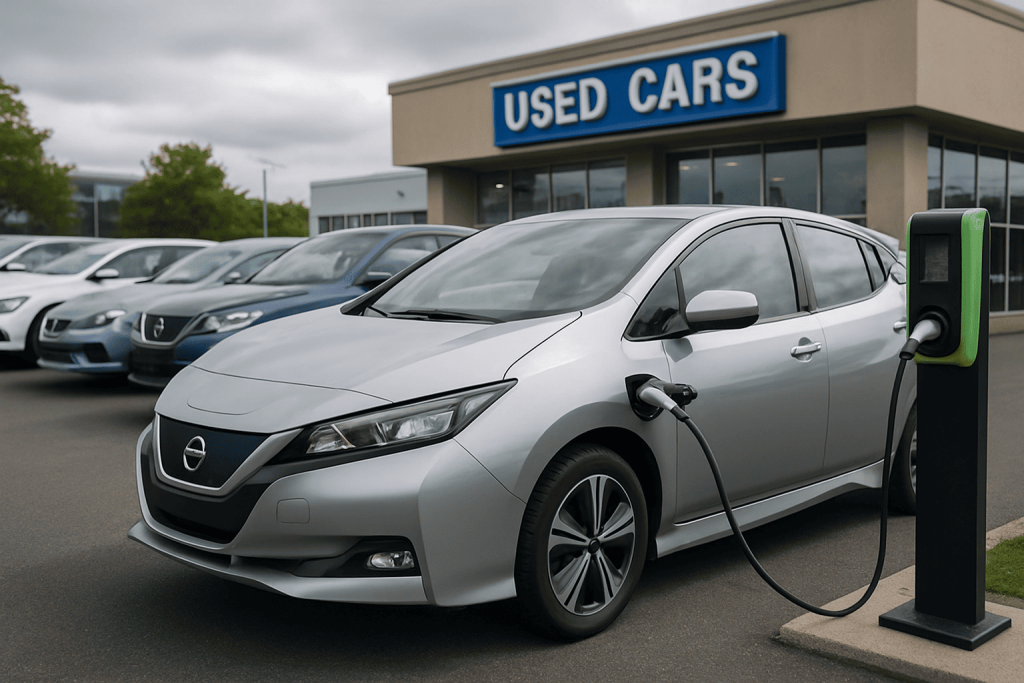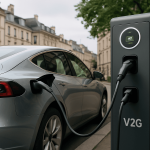In a country famed for its long winters, vast distances, and traditionally petrol-powered culture, few observers expected Russia to become an emerging hotspot for pre-owned electric vehicles (EVs). Yet over the past three years, sales of second-hand EVs have grown exponentially—from Vladivostok’s port auctions to Moscow’s online classifieds. What’s fueling this unexpected boom? A potent mix of price pressure, import dynamics, tech know-how, and grass-roots enthusiasm is reshaping the nation’s automotive landscape.
Price Matters: The Affordability Equation
New EVs shipped from Europe or China can cost 3–5 million ₽—well beyond the reach of most households. By contrast, a lightly used 2017–2019 Nissan Leaf or Renault Zoe often lists for 1.0–1.6 million ₽, sometimes less than the price of a similarly aged petrol crossover. With the rouble’s volatility and inflation driving new-car prices higher, total cost of ownership swings decisively toward the second-hand battery option: electricity at ₽5-7 /kWh undercuts petrol at ₽65-75 /L, and routine maintenance (no oil changes, belts, or exhaust repairs) slashes annual running costs by 30–40 %.
Vladivostok’s “Leaf Stream”: Japan-to-Siberia Supply Lines
Russia’s Pacific gateway handles thousands of right-hand-drive EVs each year—chiefly Nissan Leafs, Mitsubishi i-MiEVs, and Honda e compacts sourced from Japanese auctions. Brokers in Primorsky Krai unload, recondition, and dispatch them via rail or auto-transporter to Novosibirsk, Omsk, and Krasnoyarsk, where demand now outpaces supply. Local workshops upgrade heaters for –35 °C winters, swap bilingual dash firmware, and fit CCS adapters—turning quirky imports into reliable Siberian commuters.
The Western Counterweight: German and French Trade-Ins
Meanwhile, St Petersburg, Moscow, and Kazan receive left-hand-drive Renault Zoes, BMW i3s, and VW e-Golfs released from EU leasing fleets. Lower mileage, service histories, and DC fast-charge capability make these cars attractive despite steeper asking prices. Grey-market dealers bundle battery health certificates to reassure buyers wary of degraded packs—and they throw in CHAdeMO or CCS cables, knowing public charging is expanding fastest around larger cities.
Battery Health: From Fear Factor to Negotiation Tool
Degradation anxiety once chilled used-EV demand; today it’s a bargaining chip. Independent service centres in Yekaterinburg and Ufa advertise 12-step diagnostics—state-of-health (SOH) scans, internal-resistance checks, and thermal-cycle logs—issuing printed reports that influence final pricing. If SOH dips below 75 %, buyers either walk away or negotiate a 100 000-₽ discount to fund a future module swap. The presence of refurb specialists willing to replace weak cells for 60-80 000 ₽ has turned battery wear into a manageable maintenance item rather than a deal-breaker.
Charging Follows the Cars—Not the Other Way Round
Contrary to Western rollout patterns, Russia’s infrastructure often chases vehicle clusters. When a critical mass of Leafs arrives in a Siberian city, cafés, malls, and fuel stations race to install 22 kW Type-2 posts to lure EV owners. Utility-led programs such as Rosseti’s E-Taiga corridor add 50–150 kW DC chargers along federal highways, linking urban pockets. Even small towns now sport at least one AC pillar—often crowd-funded by local EV clubs that donate hardware and persuade mayors to waive installation permits.
Policy Nudges—Small but Significant
Moscow’s free on-street parking for zero-emission cars, St Petersburg’s 10-year road-tax holiday, and Far-East customs rebates on EV imports under three years old all tilt the scales toward electric. While Russia lacks large national purchase subsidies, these micro-incentives stack with operational savings to make a used EV the pragmatic choice for urban commutes and last-mile delivery fleets.
DIY Culture and Knowledge Networks
Russian motorists have long been hands-on—rebuilding Lada engines in garages or retrofitting Japanese minivans for LPG. That tinkering spirit now powers YouTube channels and Telegram groups bursting with tutorials on Leaf battery swaps, Zoe BMS firmware hacks, and winterization tricks (insulated battery blankets, 12 V diesel-free parking heaters). Owners share PlugShare pins for hidden sockets at truck stops, exchange battery modules in co-op workshops, and bulk-order CHAdeMO adapters from China, lowering costs for newcomers.
Residual Value: A Seller’s Market
Because demand far outstrips supply, depreciation on well-maintained EVs is unusually low. A 2016 Leaf bought for 900 000 ₽ in 2021 might still fetch 800 000 ₽ today—especially if SOH exceeds 80 %. Rising petrol prices and the promise of cheaper electricity shield used EVs from the cliff-like value drops common to petrol sedans, turning them into solid medium-term investments.
The Chinese Wave: Longer Range, New Competition
Recent customs data show an uptick in 2020-22 BYD Yuan Pro, JAC e-JS1, and GAC Aion S imports. With 50-60 kWh packs, factory CCS ports, and prices under 2 million ₽, they threaten to dethrone the older Leaf as Russia’s default EV. As Chinese models trickle into the secondary market, buyers gain access to 350-km real-world range—enough to link Rosseti fast chargers across the Urals without motel layovers.
Conclusion
The surge in second-hand EV sales is not a temporary anomaly but a structural shift in Russia’s car market. By lowering the financial barrier, fostering a vibrant service ecosystem, and triggering grassroots infrastructure, pre-owned electric cars are accelerating nationwide electrification faster than any top-down policy could. In a land of extremes, the humble used EV has become the unexpected hero—silent, efficient, and increasingly mainstream on roads once ruled by petrol and diesel.



lol used evs.. sounds risky🤔